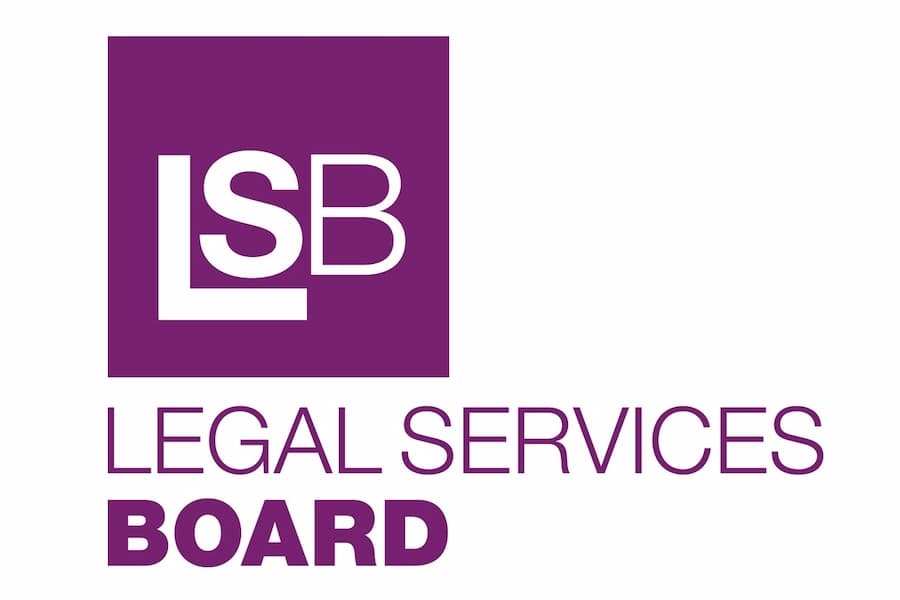The Orange Rag (http://www.theorangerag.com) reports:
This year’s Legal IT Show in Islington was unhampered by snow and significantly busier than last year, with plenty of activity on the stands and well-attended presentations. Joanna Goodman highlights the main themes from the keynote presentation by Adam Sampson, chief ombudsman and chief executive of the Legal Ombudsman, and Professor Richard Susskind’s working lunch masterclass.
Adam Sampson — establishing the Legal Ombudsman
The opening keynote presentation set the scene for this year’s Legal IT Show. Adam Sampson, chief ombudsman and chief executive of the Legal Ombudsman, the quango established to investigate complaints against lawyers, explained how investing in the right technology has enabled him to set up an efficient, cost-effective operation.
Before establishing the Legal Ombudsman, Sampson was chief executive of Shelter, where he applied a business-focused approach to a brand with an impressive 92% approval rating — interestingly, statistics show that although most people don’t know exactly what Shelter does, they have heard of it and approve of it.
The Legal Ombudsman was launched in October 2010, so it has not had long to establish its brand. However, it is already demonstrating impressive efficiency and cost effectiveness. Sampson explained how a paperless business built around technology has enabled him to build a lean, efficient organisation. He acknowledged that this is easier when setting up from scratch as no legacy systems or change management were involved; none the less, the Legal Ombudsman is a potential model for modern legal services business, traditional or ABS, or an in-house legal department.
Paperless office, sophisticated case management and KM systems
The organisation was designed around business processes, with the key objectives of resolving cases quickly and cost-effectively. The ombudsman’s office is paperless — all documents are scanned offsite. Sampson invested in cutting-edge software for analysis and tracking of cases which are stored in a fully searchable case management system.
All transactions are conducted by phone. Integrated telephony and full call recording mean that searchable sound files can be assigned to the case files. Even consents are obtained by phone and followed up in writing. Consequently, processes that previously took two weeks can be dealt with immediately.
From the outset, KM was a key priority. Knowledge is systematised and stored in a searchable KM system. The Legal Ombudsman has integrated business process management, case management and knowledge management systems. Automated, paperless processes mean that fewer staff are required, and the offices are located in Birmingham rather than London, significantly reducing the costs of premises and staff.
The ombudsman’s core business has been significantly affected by technology, connectivity and the rise of online offerings. Unsurprisingly, it is receiving an increasing number of complaints about highly commoditised internet enabled law firms. However, Sampson did not mention the rise of online dispute resolution systems and processes and whether advances in this area might reduce the number of official complaints in future.
Identifying customer ‘dissatisfaction’ trends
Sampson highlighted the fact that the large providers moving into the legal space — The Co-op, Tesco — routinely collect mass customer data. They find out which services and features encourage or discourage repeat business. Although this would not be practical for a small law firm, The Legal Ombudsman is in a position to identify more general customer ‘dissatisfaction’ trends and feed this information back to the firms. Recognition of this potential led Sampson to ‘overinvest’ in analysis and communications technology.
On the horizon
A key theme throughout was that the profession-specific Legal Ombudsman will increasingly have to work with other industries and regulatory regimes as the introduction of ABS gradually breaks down the boundaries between the legal profession and the outside world. Finally Sampson underlined the need to position the Ombudsman in three interlinked business environments: legal services; other professions and industries and the ever-changing world of Government quangos. Perhaps he is focused on brand after all.
Professor Richard Susskind’s Working Lunch
As a long-term fan of Professor Richard Susskind’s highly energetic and informative presentations, I was looking forward to his masterclass on practical technologies for changing legal service delivery.
It was a nice surprise to find that attendees received a copy of the latest edition of Susskind’s highly successful book The End of Lawyers? which he referred to throughout as ‘The End of Lawyers — question mark’ as if to reassure his audience — who were mostly lawyers — that he was not predicting their extinction. Rather, he was underlining his proposition that law firms will have to change: they need to discover what resonates with their client base and leverage technology to deliver their services accordingly.
Susskind outlined the key challenges and presented a series of strategic models that firms can use to redesign their structure and strategy in line with the shifting business environment.
Legal services delivery — the next decade
Susskind identifies four key trends that will define the next decade for legal services delivery:
– The pressure on internal and external legal services providers to deliver more for less
– Different ways of working: commoditisation, outsourcing, multisourcing
– Liberalisation and deregulation — ABS will drive the above trends as legal process outsourcers, for example, are a more attractive investment options for private equity and venture capital than the traditional law firm.
– Disruptive and emerging technologies that change the way legal services are delivered — online services, integrated communication etc.
A key strategic focus is finding new ways of turning knowledge into value. Here, Deloitte’s tax compliance delivery model is used as a possible option for delivering standardised legal services. Whereas tax compliance consultancy used to be tailored to each organisation, now Deloitte produces a tax compliance DvD. How does this affect profitability? Well, it is used by over 70% of FTSE 100 companies!
Susskind reiterated the model at the heart of The End of Lawyers? which is to ‘decompose’ legal work. This does not mean letting it rot, but rather dividing it into its constituent tasks and working out the best way of delivering each one. He advocates applying classic project management techniques to legal services delivery. Another suggestion was that law firms should outsource project management itself.
The future has already arrived. It’s just not evenly distributed yet — William Gibson
Technology is changing every industry sector and legal services are no exception. But it is important to differentiate between different types of emerging technology and consider their impact.
Susskind uses the William Gibson quote above to illustrate that other disruptive technologies are changing the way lawyers work. These include:
– Closed client communities — inhouse legal departments might work together to share the cost of compliance, for example;
– Online dispute resolution;
– Automated drafting — at the uneasy interface between hourly billing and enhanced efficiency;
– The electronic legal marketplace — including reputation systems;
– Technology advances — video-conferencing, webinars etc.
These and other developments are moving the profession away from hourly billing toward fixed fees. For example, large corporates are increasingly transferring their legal services to a legal services provider — for example Rio Tinto outsourced its legal services to CPA global saving $14 mllion in six months — or to a law firm — Berwin Leighton Paisner has taken over all Thames Water’s legal services for a fixed fee. Berwin Leighton Paisner’s ‘Lawyers on Demand’ provides interim services to in-house legal departments.
Tools for change
Susskind advises law firms and in-house legal departments on how to adapt to the opportunities and challenges of the new legal services landscape. To this end he has developed a tool for analysing the legal market and the work that falls within it, based on a grid depicting the balance between strong and weak competition and complex and routine work. The aim is to plot different types of work onto the grid in order to work out appropriate pricing and method of delivery. For example, routine work in an area where there is strong competition would ideally be delivered in a standardised computerised way, whereas complex, specialised work in an area of weak competition would require a more traditional advisory approach.
Susskind offers four models for legal businesses, which use technology to a greater or lesser extent: the target, the doughnut, the glazed doughnut and the cog. The names reflect the shape of the models depicted in The End of Lawyers? These are progressive models, where the target is a graphical depiction of the traditional law firm model, comprising expert advisers, trusted practitioners and routine workers; the doughnut has just two sections — the trusted advisor and the enhanced practitioner — as routine work has been outsourced; the glazed doughnut adds a layer of analysts and project managers to manage the decomposition and distribution of the various services. Susskind sees this as the likely model for the law firm of the future.
The final model is the cog — which struck me as a mixed metaphor combining engineering and food — or something on Homer Simpson’s desk — as it depicts a glazed doughnut surrounded by cogs. The message is serious though: due to confidentiality for example, some firms may choose to outsource only certain elements of their routine work and retain the rest in-house. Here the choice of technology again becomes critical.
Blank sheet thinking : a new approach to strategy and structure
Finally, Susskind encourages law firms to engage in some ‘blank sheet thinking’ by asking different practice areas to redesign their practice from scratch and envisage how it would look if there were no legacy systems to change. The idea is to identify which systems and processes are business-critical and anything missing from their current operations.
This brings us back to Adam Sampson and the Legal Ombudsman — an example of blank-sheet thinking in practice. Why does it work? Sampson focused on the needs of the organisation, the service it is engaged in delivering now and potential future changes, and invested in the appropriate technology. He over-invested in market analysis and process management. Cutting edge technology helped to standardise routine work and deliver it faster.
The message from both presentations is that the law firm of the future needs to leverage technology to get away from traditional strategic thinking. It is time for a new strategic model. This involves market and competitor analysis, and using blank-sheet thinking to transform the structure and shape of your business to deliver what the market requires.
Today’s Conveyancer, bringing you the latest conveyancing news and updates.




















